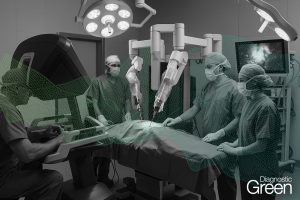Background: Redo ileocolic resection in patients with Crohn’s disease (CD) is associated with significant technical challenges that may be associated with high complication rates. We aimed to evaluate the feasibility of near infra-red fluorescence angiography with indocyanine green (ICG), often used to evaluate blood supply to the anastomosis in CD patients undergoing repeat ileocolic resection.
Methods: A retrospective analysis of patients who underwent redo ileocolic resection using ICG bowel perfusion assessment during 2015-2021 were matched and compared on a 1:2 basis to a control group undergoing the same procedure without perfusion assessment.
Results: 12 patients underwent redo ileocolic resection with ICG perfusion assessment (ICG group) and compared to 24 patients who underwent the procedure without ICG (control group). Both groups were similar in demographics and operative characteristics including median operating time (255 vs 255.5 minutes, p=0.39) and conversion rate (22% vs 36.8%, p=0.68). Median estimated blood loss was significantly higher in the ICG group [150 (50-400) vs 100 ml (20-125)]. Successful ICG perfusion assessment was seen in all patients in the ICG group and did not change management in any case. Overall postoperative complication rates were comparable between the groups (58.3% vs. 54.1%, p=0.72). No anastomotic leaks occurred in the ICG group compared to one patient (1/24, 4.2%) in the control group (p=0.99).
Conclusions: Fluorescence ICG perfusion assessment is feasible and safe in redo ileocolic resection in CD patients. Larger studies are needed to evaluate whether this technique should be routinely used in these complex surgical interventions.




